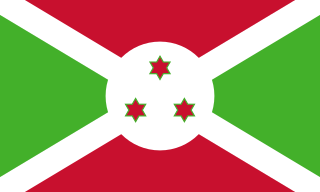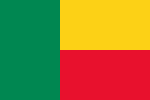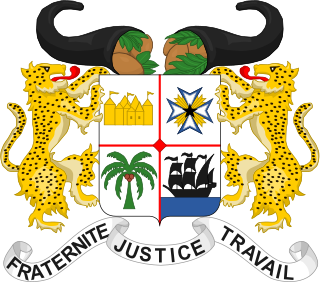The Media of the People's Republic of China consists primarily of television, newspapers, radio, and magazines. Since 2000, the Internet has also emerged as an important form of communication by media, and is placed under the supervision of the Chinese government.

The media of South Africa has a large mass media sector and is one of Africa's major media centres. While South Africa's many broadcasters and publications reflect the diversity of the population as a whole, the most commonly used language is English. However, all ten other official languages are represented to some extent or another. Afrikaans is the second most commonly used language, especially in the publishing sector.
Thailand has a well-developed media sector, especially by Southeast Asian standards. Although observers have sometimes described Thai media as relatively free, at least by Southeast Asian standards, in fact the Thai state government and the military have always exercised considerable control, especially over radio and TV stations. During the governments of Thaksin Shinawatra, the subsequent military-run administration after the 2006 coup and military coup of 2014, the media in Thailand—both domestic and foreign—have suffered from increasing restrictions and censorship, sometimes subtle, sometimes overt. Thai media are protected by the copyright law of Thailand.
In the media of Bolivia there are nearly 200 privately owned television stations, but because rural regions of the country have few televisions and television reception is poor in many areas of the country, radio remains an important news disseminator. At last count, Bolivia had more than 480 radio stations, most of which were regional in scope. Bolivia also has eight national newspapers, to go along with many local ones. Of the national papers, four are based in La Paz, three in Santa Cruz, and one in Cochabamba. Most Bolivians continue to get their news from newspapers and radio broadcasts.
The media of Brunei are strictly controlled by the government under Sultan Hassanal Bolkiah, which has effectively imposed martial law in the country since the Brunei Revolt of 1962. News coverage consists of police-beat reporting, lifestyle features and community events, with little in the way of diverse viewpoints. Reporters Without Borders reports there is "virtually no criticism of the government". The liberal democracy watchdog Freedom House lists Brunei's media as "not free".

The media of Indonesia consist of several different types of communications media: television, radio, cinema, newspapers, magazines, and Internet-based Web sites.
Media in Colombia refers to media available in Colombia consisting of several different types of communications media: television, radio, cinema, newspapers, magazines, and Internet-based Web sites. Colombia also has a national music industry.
Media in Pakistan provides information on television, radio, cinema, newspapers, and magazines in Pakistan. Pakistan has a vibrant media landscape; among the most dynamic in South Asia. To a large extent the media enjoys freedom of expression in spite of political pressure and direct bans sometimes administered by political stake holders. Political pressure on media is mostly done indirectly. One tool widely used by the government is to cut off ‘unfriendly’ media from governmental advertising. Using draconian laws the government has also banned or officially silenced popular television channels. The Pakistan Electronic Media Regulatory Authority (PEMRA) has been used to silence the broadcast media by either suspending licenses or by simply threatening to do so. In addition, media is also exposed to propaganda from state agencies, pressured by powerful political elements and non-state actors involved in the current conflict.
Algeria has more than 45 independent Arabic language and French language publications as well as 4 government-owned newspapers, but the government controls most printing presses and advertising. The Algerian newspapers with the largest circulations are Echourouk (1,800,000), Ennahar (1,600,000), El Khabar (1,000,000) and Quotidien d'Oran (700,000); all four are employee-owned. The government also owns all radio and television outlets, which provide pro-government programming. In 2004 and 2005, the government increased the access of Berber language and culture to both print and broadcast media.

The media of Mongolia refers to the print, broadcast and online media in Mongolia. Since the collapse of the Soviet style system in 1990, the media has undergone large reforms which have allowed greater diversity and freedom of the press which make it one of the most free in the region. Censorship of media outlets is forbidden under the 1998 Media Freedom Law. In its 2013 report, Reporters Without Borders classified the media environment as 98th out of 179, with 1st being most free.
The Media in Angola is primarily controlled by Angola's dominant political party, the People's Movement for the Liberation of Angola (MPLA), led by José Eduardo dos Santos, the country's president.
Media in Botswana is controlled by the government.

Media in Burundi is controlled by the government.
The media of Cameroon includes independent outlets. The nation has only one national newspaper, which is state owned.

This article is about the Media in Cape Verde including its telecommunications, television and radio.
Media of the Central Africa is controlled by the government.
Media in Chad is controlled by the government.
Telecommunications in Taiwan comprise the following communication media, deployed in the Taiwan Area of the Republic of China and regulated by the National Communications Commission of the Executive Yuan.
Media in Ivory Coast is controlled by the government. Audiovisual communications are regulated by the Conseil national de la communication audiovisuelle (CNCA), an administrative arm of the national government.
The media of Gabon is primarily monitored by the Gabon government. Although the main newspapers are associated with the government, there are private broadcasters, and private weekly newspapers that are mostly controlled by opposition parties.










